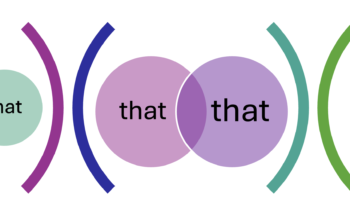How long will it take to edit this?
The question of how long an edit will take comes up a lot. At first, estimating seems like a shot in the dark. The best bet is to do a few random pages and multiply your findings to take in the whole manuscript. Also, take 60 seconds to edit a sample and identify the most pressing changes that are needed. However…
Pages/words per hour guidelines follow.
Calculate time and cost in a click.
More than a decade [nearly three, now!] of detailed invoicing has shown me that guidelines I once found in The Editorial Eye (shown below) are pretty accurate. They even accounted for the ranges they gave, though I have revised it to reflect the efficiency of computer tools for editors and the emergence of editing in content management systems (CMS) such as website and database back-ends. The source publication is now out of print.
(Note that these rates can only be applied to a single selection of continuous prose. They do not apply to graphic texts, nor can they be applied to the sum of all text on a series of slides, for example. We are collecting data about editing slide sets to establish some kind of pace benchmark. Please answer the 6 question survey.)
proofreading
2000–2500 words / hr
Faster if: few errors, simple format, nontechnical or familiar content, clean copy, no style queries required
Slower if: many errors, complex format, copy marked up, style checks required, contains equations, symbols, or foreign characters (symbols, not foreigners 😉 )
See the definition and standards for proofreading from the Editors’ Association of Canada (EAC).
copy editing
1000–1500 words / hr
Faster if: few errors, nontechnical or familiar content, working onscreen, no references or cross-references, no tables or figures
Slower if: many errors, content technical or unfamiliar, working on hard copy or in a CMS, or if the reference style is inconsistent, incomplete or doesn’t match the text
See the EAC definition and standards for copy editing.
substantive editing
500—1000 words / hr
Faster if: well written and organized, nontechnical or familiar content, single author, no references or cross-references, no tables or figures, working onscreen
Slower if: poorly written or written by someone for whom English is an additional language, content technical or unfamiliar, multiple authors (but need one voice), hard copy or edit in a CMS
EAC splits substantive editing into structural and stylistic editing. See those defined as well as the standards for structural and stylistic editing.

More recently, I found a handy productivity chart put out by the Editorial Freelancers Association. It looks to be in the same ballpark, though it doesn’t explain the variability.
Advice on Estimating for a New Project
See the printable schedule and glossary.
My advice on estimating for a new project is to use the high end of the scale, then add 10%. Or, if the client is inexperienced and the topic is unfamiliar, use the high end of the scale and double it.
Once, my final bill came in well under such an estimate. Once. One substantive editing project in my recent past actually ended up with the rate of one page per hour. It was excruciating: dense, complex, and unfamiliar. In the future, I will recommend a colleague who is better suited to the subject and style of that particular client.
Instant Time Estimator
_
Starter Kit for Editors category | Finding Work | Office Essentials | Background Skills | Is Editing for You? | Reading List | How to Become an Editor | Setting Fees
This question comes up So Very Often that here is a handy chunk of links that you or I can paste in a reply:
We Canadian editors tend to stick to the definitions and standards set out by our pro org (EAC) which are by no means widely accepted as *the definitions* but are a good starting point.
Definitions — http://www.editors.ca/hire/definitions.html
Standards [task list for each stage] — http://www.editors.ca/resources/eac_publications/pes/index.html
Pace typical of various stages/types of editing — http://scieditor.ca/2011/07/productivity-rates-in-editing/
Instant estimate of time & cost — http://scieditor.ca/instant-estimate-2/
A very interesting post about reading speeds and why detailed reading is slower, by Melanie Thompson.
As CMOS17 says, “A 100,000-word book manuscript, edited by an experienced editor, might take seventy-five to one hundred hours of work before being sent to the author, plus ten to twenty additional hours after the author’s review.”
*This post appeared in the original blog on Valentine’s day, 2011. As it is by far the most popular post from that old blog, I gave it new life here. Updated photo July 31, 2012. Added instant calculator Nov. 2013.




As well as the PES mentioned above, here are some blog posts that describe the different kinds of editing:
http://dameditors.ca/2013/02/kinds-of-editing/
http://catherineryanhoward.com/2013/04/04/structural-editing-for-self-publishers/
I agree with Ragini: I find copyediting online to be much faster than on paper. For one thing, I can make global changes with Find and Replace in the blink of an eye. But I’ve also done editing online for my entire career. Perhaps those who trained on paper find that faster?
Revising is looking over the paper and renadig the paper through to make sure everything makes sense. Proofrenadig is printing out a hard copy and looking for grammar mistakes and spelling errors. Editing is fixing based off of suggested comments and cutting out pieces of the paper if necessary. Proofrenadig, revising, then editing.
There certainly is a lot of variation in the way the term “editing” is applied. It can mean everything from project management to checking printer’s proofs. Expectations and terminology differ from country to country, and even among industries (markets) within a country. Some clients will call proofreading “quality control.” It’s important to understand the terms your clients choose to use.
Please click on the “definition” and “standards” links in the post above to clarify what each type of editing means _in this post._ Other definitions may be valid.
Even my professional association defines about 12 different types of “editing.” You will see that in the definitions link. To think that editing is just one step is a common misconception. The process can take a year for a longer work; and if it simply must be perfect, editing will involve at least 3 editors.
Paper rarely has anything to do with editing anymore. Some publishing clients might think the practice of editing on hard copy is quaint, others will think it is highly inefficient and demonstrates a degree of technical inability, or that the worker is not in touch with developments in the industry.
The industry won’t accept manuscripts written in pen anymore either.
What a handy round-up! These speeds are bang on, indeed, in my experience.
Most of my clients are Dutch academics so most of my editing work falls into the substantive category. NEEDSer quotes for editing are always based on a processing speed of around 1000 words/hour though in practice that speeds up if I’m familiar with the author’s style (usual mistakes).
Why would working online slow a copyedit? Not having to bother about my auwful handwriting (i.e. marking up legibly) has sped me up no end 🙂
Thanks so much for weighing in. The original article was found in the 90s. I think that working practices have changed, and hardly any editor today would feel that editing on screen slows down the process. I’ve been thinking of updating the notes. I’m reassured because you concur.
These speeds match what I’ve found to be the case. I especially agree with your advice on estimating for a new project.